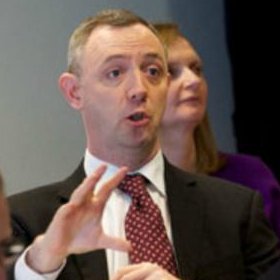People management, dynamic capabilities, and workplace innovation: building back better
By Colin Lindsay - Posted on 23 March 2022
Professor Colin Lindsay discusses how effective HR and people management can contribute to the dynamic capabilities of organisations seeking to build back post-Covid19.
The Covid-19 crisis and its impacts have required organisations to demonstrate dynamism in innovating their business models, developing new product and service offers, and transforming methods of work organisation. Business stakeholders and researchers are accordingly interested in tools that can help them to understand why organisations have been more, or less able to demonstrate agility and innovation in the face of the crisis.
It seems to me that there is considerable value in revisiting the already highly influential ‘dynamic capabilities’ framework developed by US scholar David Teece and colleagues from the mid-1990s onwards. For David Teece, “Dynamic capabilities are the firm’s ability to integrate, build and reconfigure internal and external resources to address and shape rapidly changing business environments.”
For Teece and colleagues, dynamic capabilities can be understood in terms of organisations’ capacity to sense and articulate opportunities and threats, seize opportunities, and dynamically reconfigure tangible and intangible assets to transform the organisation and its operations.
Sensing involves searching and exploring across networks, technologies and markets, identifying latent or emerging demand, spotting changes in sector and market structures and business models, and processing threats from competitors and insights from supply chain partners and customers.
Seizing involves responding through the development of new products or services and/or innovating the business model or ways of working (facilitated by investments in new technologies, systems, and capabilities). Reconfiguring and transforming requires the modification and re-alignment of product or service offerings in line with the organisation’s (renewed) systems, processes, ways of working and capabilities.
Examining dynamic capabilities is a helpful approach to understanding organisations’ handling of Covid-19 challenges, given the theory’s focus on responsiveness to change and crisis. Indeed, several reports have used the framework to assess the agility demonstrated by some organisations in pivoting and innovating in response to Covid-19. For example, Gloria Puliga and Linda Ponta’s recent research with Italian firms notes the importance of external networking to dynamic capabilities in organisations responding effectively to Covid-19 challenges.
However, perhaps a key weakness in much of the existing dynamic capabilities research is its relative failure to factor in the role of people management (or indeed just people at different levels and roles within organisations) in promoting dynamism and innovation. This isn’t to say that HRM and people management is completely absent from dynamic capabilities research. The original research by leading dynamic capabilities scholars makes some (albeit limited) reference to HR investments to promote a flexible workforce that is willing to buy-in to transformative change processes.
Recent work by Paula Apascaritei and Marta Elvira in Human Resource Management Review journal has been helpful in scoping out what ‘HRM dynamic capabilities’ might look like, focusing on:
· Knowledge building capabilities (strategies to support workforce diversity to contribute to innovation; the valuing of relational ties brought to the organisation that can lead to knowledge, talent and/or customer acquisition).
· Social integration capabilities (enabling relationship-building with customers and partners; building social capital within and across teams).
· Reconfiguration-enhancing capabilities (a focus on upskilling employees for ‘functional flexibility’; but also practices helping employees to manage change and mitigate stressors associated with organisational transformation).
There remains a need for further research on how these sorts of capabilities are made real by people managers in different organisational contexts. We also think that there may be important lessons for dynamic capabilities researchers that we can draw from the broader evidence base on how targeted HRM strategies can support ‘workplace innovation’.
Our previous research in this space warns against pursuing a single, de-contextualised best practice, but identifies a number of recurring themes around HR practices that have supported employees to innovate in different organisational contexts: job design that values high levels of autonomy; consistent and good quality feedback; strong communications and peer support networks within teams; and sufficiently challenging job content that nonetheless guards against employees becoming burnt out.
Manufacturing can be a challenging context within which to redesign work to maximise autonomy and innovation at the individual-level. However, even here there are examples where thinking creatively about people management has empowered employees at all levels to participate in innovation and drive change.
What more can we learn about the combination of workplace and people management practices that work well in tapping the innovative potential of employees to drive dynamic capabilities? What challenges do manufacturing employers face in aligning people management with their priorities for sensing and seizing opportunities and transforming their operations to build back better post-Covid-19?
These are some of the issues that our Strathclyde Business School InterAct team will be exploring with UK manufacturers in the coming months. If you are a manufacturing sector stakeholder or an employer interested in maximising the innovative potential of employees at all levels, we would be excited to hear your views and to discuss our research.
If you are a manufacturer who could benefit from participating in our free research on how people management can foster innovation, please contact colin.lindsay@strath.ac.uk. Paula Apascaritei and Marta Elvira, IESE Business School, are speakers in an ESRC PrOPEL Hub/ESRC InterAct webinar on May 5 where they will discuss similar issues - please join if interested.










